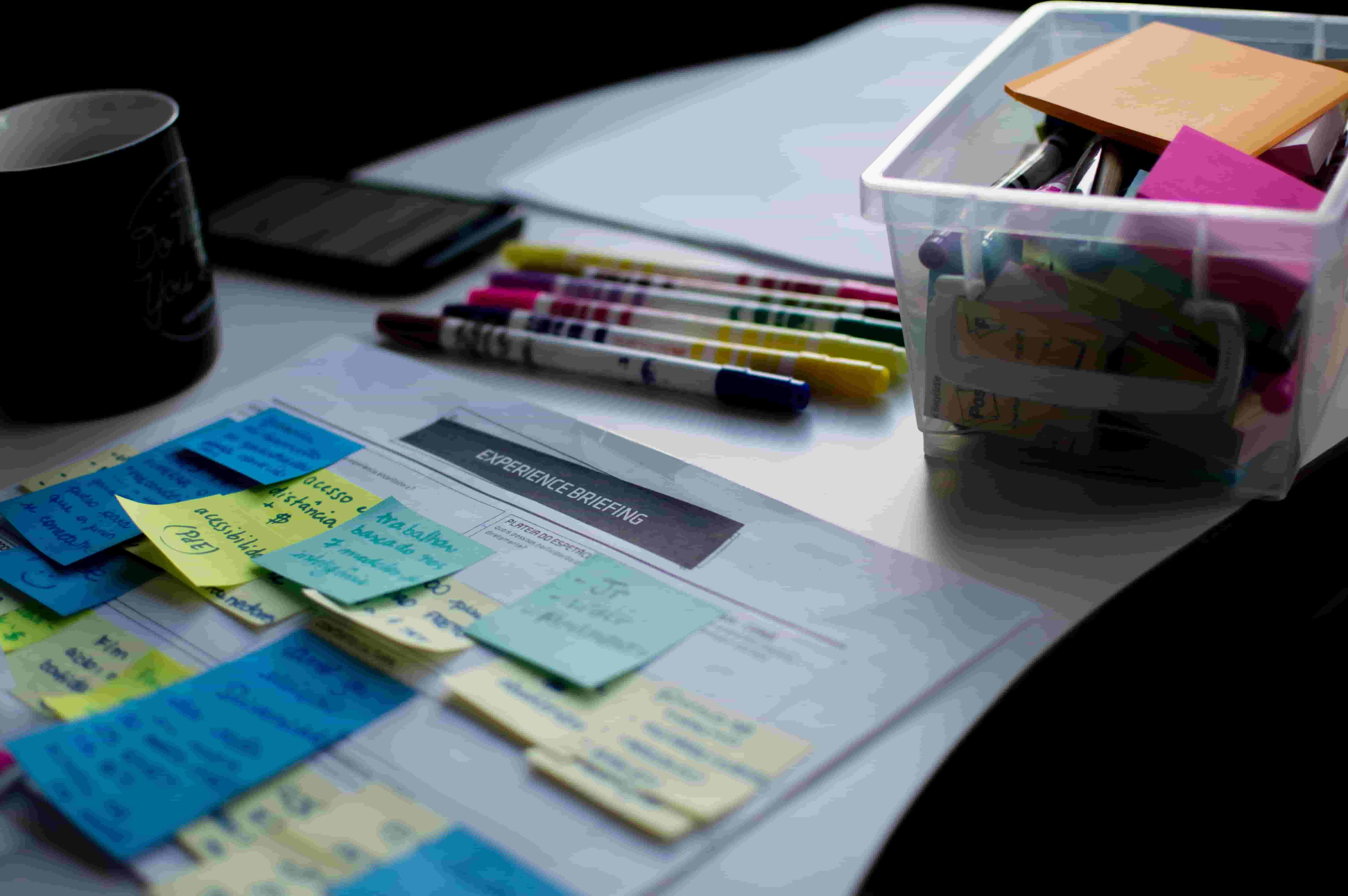“Failing to plan is planning to fail”
Every educator knows the importance of a well-structured lesson plan in a classroom A good lesson plan motivates students and serves as a guide, making sure that teachers cover the necessary topics, stay on schedule, and create an interactive learning environment.
The Objective of Creating a Lesson Plan - Why is it Important?
A lesson guides teachers through what to cover, how to teach it, and when to finish it. It gives them structure, rhythm, and control, making educators confident in their teaching methodologies. Some key objectives of having a lesson plan are:
- Time management and efficiency
- Minimizing chaos and confusion
- Allowing teachers to adopt a confident approach
- Having a good flow of classroom lessons every day, avoiding confusion.
- Boosting overall teaching efficiency, and attendance of students.
What do we need to consider in preparation of a Lesson Plan?
Teachers should perform thorough research to understand their students first, to make a suitable lesson plan. Know their capacity, attention span, and level of interest to tailor your teaching approach accordingly.
- Design a diverse lesson plan example, keeping in mind the unique learning capacity of students.
- Consider the available resources, learning materials, and technical platforms that could be used to assist the success of your lesson plan
- Prepare backup plans for emergencies, holidays and sudden fallbacks in the class.
- Be open to suggestions and adapt changes in the Plan as and when required. Flexibility is the key.
How to Make a Lesson Plan?
- Define the objectives you want your students to learn or achieve by the end of the lesson.
- List the activities, their duration, and objectives to keep your class engaging and active.
- Set realistic and attainable goals with a timeline
- Focus on increasing student participation in a class during the lesson and test sessions.
- Gather feedback from your students to make them feel included in the lesson, and also use their personal suggestions to improve.
- Be flexible and adjust your plan based on experience and student response.
For every teacher, the primary aim is to teach effectively and to ensure that the learning process is efficient. For this, the students have to be engaged and motivated. An engaging lesson starts with an engaging lesson plan. A lesson plan will help teachers to engage with students in a better way. It also helps in removing chaos and confusions and to stay on schedule.
On that note, let us look deeper into the importance of lesson planning, how to make a lesson plan, and a few lesson plan samples to help you get started.
A good lesson plan is much like a well-written book. Everything is in place and everything makes sense. The important thing to keep in mind is to keep it simple and not to complicate things. Before getting started with how to make a lesson plan, let’s look at why you need to have a lesson plan:
The Objective of Creating a Lesson Plan- Why is it Important to Have a Lesson plan?

All of us have been grocery shopping. Isn’t it much easier when we have a grocery list? It is even easier when we know where things are or if we have a guide telling us where they are. A lesson plan is like a guide or a map that tells teachers what are the things they need to cover, when they need to finish it and how they need to do it. It is basically putting your action into words and following it.
The lesson plan helps to create a structure and this will help to establish a rhythm. A lesson plan will help the teacher to be in control. Command and authority are important when it comes to teaching a class. It also helps to instill confidence in the teacher. When one talks about a lesson plan, it is essential to understand that it is not necessarily a script or a long document. It can be a few pointers that help the teacher to navigate through the lesson smoothly and ensure a great learning process. To sum up, the objectives of having a lesson plan are:
- Saves time and helps with time management
- Minimizes chaos and confusion
- Instills confidence
- Ensures smooth functioning of the classroom
- Boosts efficiency
Now that we have stated the importance of having a lesson plan, let’s look at the important things to keep in mind before making a lesson plan.
Things to Keep in Mind While Creating a Lesson Plan
1. Research and understand your students

Before setting up the lesson plan, it is of paramount importance to understand your students. What kind of teaching would benefit them the most, their capacity, attention span, level of interest for the subject, the gravity of the lesson, and how they would handle it are some areas that you need to research on. Of course, this would be a one-time thing. Once you understand the pulse of your class, the rest is easy to handle. In case if you’re thinking that you can handle it along the way, it might result in extra work.
2. Know your Lesson
This is very basic. Before creating the lesson plan, you have to know about the lesson and its nuances. In simple terms, you have to know the lesson in and out in order to understand how you can teach it and what all activities you can incorporate into the lesson. The kind of discussions that you have planned and activities will differ based on the lesson.
3. Availability of Tools

You might have a range of ideas. However, some of them may not be feasible. You have to take into account the tools that are at your disposal and what kind of channels you can use. With classes moving online, there’s no restriction on the kind of visual aids that a teacher can lay hands on. There are educational games apps, quiz apps, and many more. See what fits your lesson perfectly and move accordingly.
4.Have a Contingency Plan
This might seem contradictory but it's a fact that things don’t always go according to plan. So it's always advisable to have a plan B in place. Things can go wrong, an unprecedented event or a guest lecture may slide in and countless other things that might disrupt your plan. It is always wise to have a “what would I do if this doesn’t work out” thought in mind and a plan in hand.
5. Alterations and Adjustments
Let’s say, I am a tailor-made outfit person because that fits me perfectly. But if I were to say that I won’t alter my clothes when I put on weight or lose weight, that would just make my clothes the wrong fit, right?. The same applies to a lesson plan. If you don’t alter it and change it accordingly, it might be the wrong fit for your classroom. Sticking to the same lesson plan from last year, for instance, is one such mistake. You can use the same skeleton and adapt to make a better one.
Now that we have looked into the things to keep in mind while making a lesson plan, let’s go ahead and see how to make a lesson plan and the steps of the lesson plan.
Steps of Creating a Lesson Plan
1.Define the Objective
We have already looked at the objective of creating a lesson plan. This, however, is different. The first step of creating a lesson plan is to define the objective, i.e, to understand and describe what you want your students to learn or what you want to achieve at the end of the lesson.
Example: If you are teaching Macbeth, the objective of the lesson can be to make your students understand the essence of the play and the analysis of characters. Objectives can be manifold. It can be what your students will be able to do after the lesson, the kind of conclusion that they can draw and likewise. First and foremost, you must have a clear understanding of what you are trying to communicate.
2.List the activities
A lesson plan must include all the activities that you are going to incorporate in your class. Make a list of the activities that you are planning to give your students, how much time it would consume, and if you want your students to divide themselves into groups, so on and so forth. Describe what you plan to achieve out of this activity.
Example: Let’s take the same example of Macbeth. If your activity is to make two students enact a scene, describe it like:
Activity i: Enacting scene 2
Time: 10 Mins
Number of students involved: 4
Objective: To give life to the play and to make students understand the essence of the scene and the characters involved.
Activity ii: Group Discussion
Time: 20 Mins
Number of students involved: 5 groups of 6 students
Objective: To ensure that students are reading the play, to gather the different points of view, and analyze how much students have understood the play.
The activities may differ from lesson to lesson and from subject to subject. The point is to keep your class active and engaging.
3. Set Attainable Goals and Timeline

Setting a schedule and planning when to finish the lesson is one of the key areas of a lesson plan. Schedule what you want to talk about in each class and how many portions you want to cover in a given time. Ensure not to rush and hence, set attainable goals. Narrow down your list and evaluate whether what you have set for yourself is doable.
Example: If you are planning to finish 5 pages of the play in the first period, along with all the activities, put that down in your plan. But, also remember to be accommodating and to be adaptable.
4.Include Student Interaction into the plan and the timeline
Accommodate student interaction into the plan and use various methods of student interaction. As we discussed in our previous blog, communication, and interpersonal skills are very important for a teacher. Every kid learns differently. It’s hard to draw a perfect plan that would fit everyone alike. So, it is important to use different strategies and methods to boost student interaction.
Example:
Readout a part of the play and express what you think about it- 10 mins
Draw a scene from the play in an abstract manner and ask students to elaborate-10 mins
The interaction can be small or huge, you can try all methods and choose the one that works best for you.
5.Assessment and feedback
Leave time for assessing how much your students have understood and for feedback so that you know whether you are moving too fast or slow. You can also understand whether the activities are working well and whether your intentions have been taken across effectively. Set aside time for this as this is one of the most important steps of the lesson plan. With classes moving online, getting feedback and assessment have become easy. Online teaching platforms are redefining education altogether and it is definitely for the better.
6.Proper Exit and Closure
This is yet another pivotal part of a lesson plan. How would you feel if you were watching an amazing movie and miss the climax? Not a very pleasing experience right? The same happens when you don’t have a proper closure for the lesson. Plan a good closure with summary, pointers, and interactive sessions so that your teaching becomes more effective.
7.Practice and Adapt
As discussed earlier, it is not necessary that all things will go as per plan, you might not be able to finish 5 pages as planned. So, alter the plan for the next day, change the timings accordingly and prepare in front of the mirror or just read the lesson to yourself before the class begins. Small practices like this can create a huge impact on your teaching.
Now that we have looked into the major steps of the lesson plan, let’s look into the format of a lesson plan. A lot of people have the question of how to create a lesson plan template, we hope you find this helpful.
Format of A lesson Plan/ Lesson Plan Template


The format can change from subject to subject. The teaching approaches can include the activities that you are planning to incorporate or you can add another column as per your comfort.
Conclusion
We have discussed in-depth about how to make a lesson plan and the various aspects that circle around a lesson plan. We have also provided a lesson plan sample to help you through the process. However, always keep in mind that there’s no perfect way to make a lesson plan. You have to play to your strengths and be wise enough to come up with one that suits you the best.
What according to you are the things to keep in mind while creating a lesson plan? Do you follow any rule in particular? Let us know in the comments section.
To bring ease and efficiency to the table, it is of utmost importance to digitize your school. With a brilliant suite of features, Teachmint's Integrated School Platform makes the process of management, teaching, learning, and analysis- easy, effective, and practically consolidated with one another. Check out the features here.
An effective lesson plan is irreplaceable for successful teaching. While there's no one-size-fits-all approach, understanding your students, knowing your lesson well, and being adaptable are key elements to consider. By following a structured lesson plan, teachers can provide a productive learning experience for all their students. Happy Teaching!
Learn more about Teachmint plans here.












